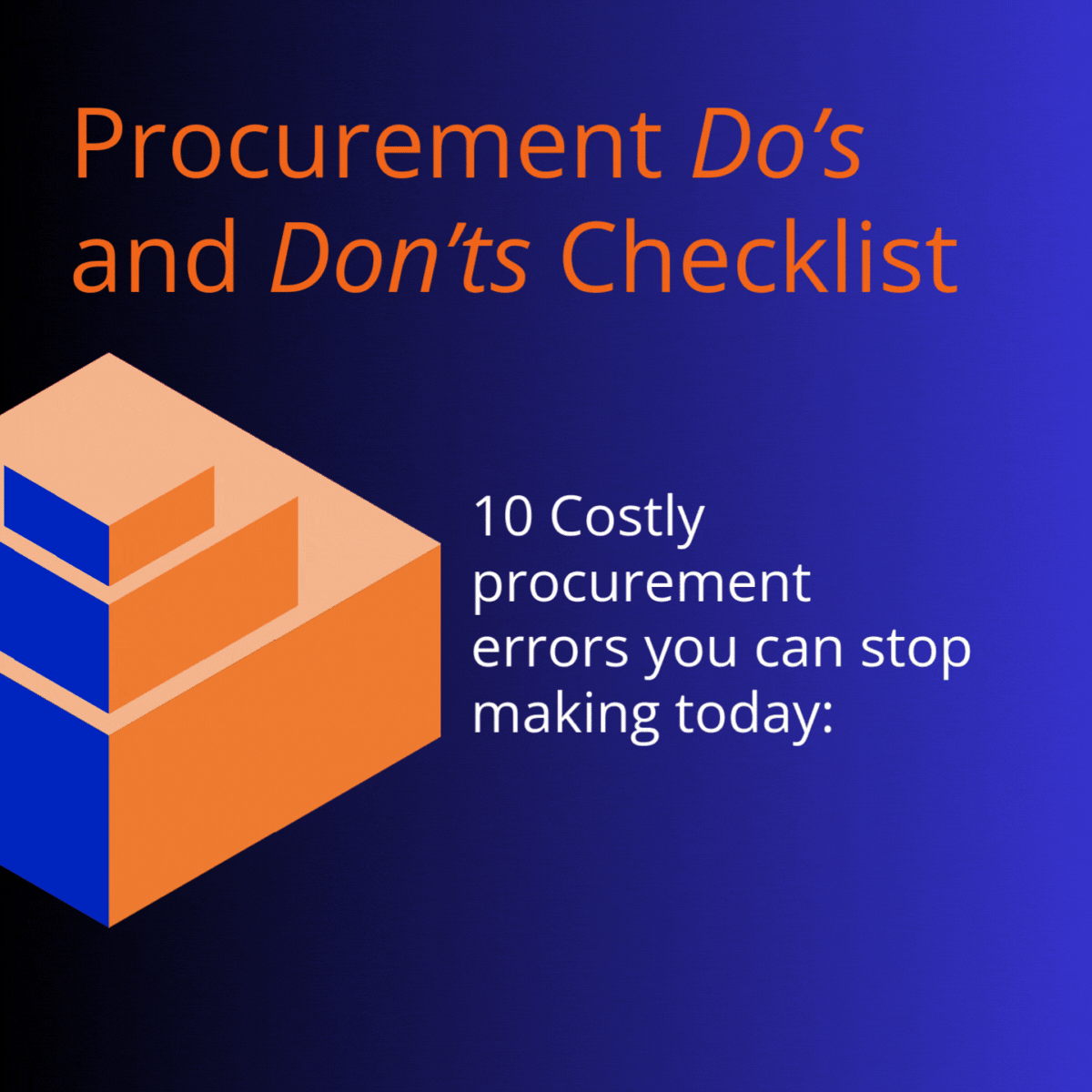10 Procurement Mistakes to Avoid (Before They Cost You)
- Robert

- Sep 19
- 3 min read

Table of contents
Here's our AI podcast if you don't have time to read the full article:
Procurement success is just as critical as sales - sometimes even more. Building a high-performing procurement team doesn’t happen overnight; it requires strategy, discipline, and focus. Yet many organizations keep falling into the same traps. These 10 procurement mistakes are not only common but also expensive. The upside? With the right strategies and digital tools, you can avoid them before they cost you.
1. Going Above Your Budget
One of the biggest procurement risks is overspending. It often happens early in the fiscal year, or when costs aren’t monitored closely enough.
How to avoid it: Set monthly or quarterly budget checkpoints and track expenses in real time.
Procurement software with spend visibility features helps you stay on target and catch overspending before it snowballs.
2. Not Building Supplier Relationships
Treating suppliers like order-takers is a missed opportunity. Without nurturing supplier relationships, you lose out on better pricing, innovation opportunities, and preferred access during supply shortages.
How to avoid it:
Implement supplier relationship management (SRM) practices. Schedule regular performance reviews, maintain transparent communication, and view suppliers as strategic partners, not just vendors.
3. Skipping Negotiation
Accepting catalog prices without question is one of the most common procurement mistakes. Everything from unit costs to shipping terms is negotiable.
How to avoid it:
Train your team in procurement negotiation best practices. Ask for discounts on volume orders or early payments. Just balance your strategy - pushing too hard on every deal can strain supplier trust.
4. Impulse Buying
Rushed or unplanned purchases drain budgets and disrupt workflows. Impulse buying in procurement often happens under deadline pressure or when teams focus only on price, ignoring quality or long-term fit.
How to avoid it:
Use a structured requisition and approval workflow. Every purchase request should align with organizational priorities. Automating approvals keeps impulse buys in check without slowing down business needs.
5. Overlooking Innovation
Procurement isn’t just about cost control - it’s also a driver of innovation. Ignoring supplier innovations or alternative solutions means missing chances for efficiency, sustainability, or competitive advantage.
How to avoid it:
Engage suppliers in innovation discussions. Ask about new technologies, alternative materials, or sustainable solutions that could create long-term value. Build innovation KPIs into contracts.
6. Forgetting Technical Compliance
Cutting costs while ignoring technical specifications can lead to defective products, delays, and compliance failures.
How to avoid it:
Hold technical review sessions with suppliers before agreeing on commercial terms. Make sure compliance requirements are documented, verified, and aligned with quality standards.
7. Ignoring Commercial Conditions
Payment terms, warranties, penalties, and service agreements directly affect risk and cost. Ignoring them creates disputes and unexpected expenses.
How to avoid it:
Clearly outline commercial conditions in your RFQs and contracts from the start. This ensures suppliers account for them in their pricing and protects you from future legal or operational risks.
8. Not Having a Compliance Policy
Without a strong procurement compliance policy, you open the door to maverick spending, fraud, and regulatory violations.
How to avoid it:
Create a procurement compliance checklist with clear rules for every stakeholder. Train employees and suppliers on compliance expectations, and update the policy yearly to match new regulations and ESG standards.
9. Isolating Major Decisions
Procurement doesn’t exist in a vacuum. Making big sourcing decisions without involving finance, operations, or IT often leads to costly misalignment.
How to avoid it: Adopt a cross-functional procurement process. For major contracts, involve all impacted stakeholders in RFQ/RFP stages. Collaboration ensures chosen suppliers meet both technical and business needs.
10. Refusing to Use Procurement Software
Relying on spreadsheets and email chains isn’t just inefficient - it’s risky. Manual processes lead to errors, poor visibility, and lost savings.
How to avoid it: Adopt e-procurement software to automate requisitions, approvals, RFQs, reverse auctions, and supplier management. Platforms like Prokuria cut cycle times, increase compliance, and give real-time spend insights.
Final Thoughts
Procurement mistakes are costly, but they’re not inevitable. By addressing these 10 common risks - from overspending and poor supplier management to neglecting compliance and digital tools - you’ll build a procurement function that drives savings, reduces risk, and delivers long-term value.
Want to see how modern procurement software helps you avoid these pitfalls?
Book a free demo with Prokuria and start transforming your procurement process today.




Comments